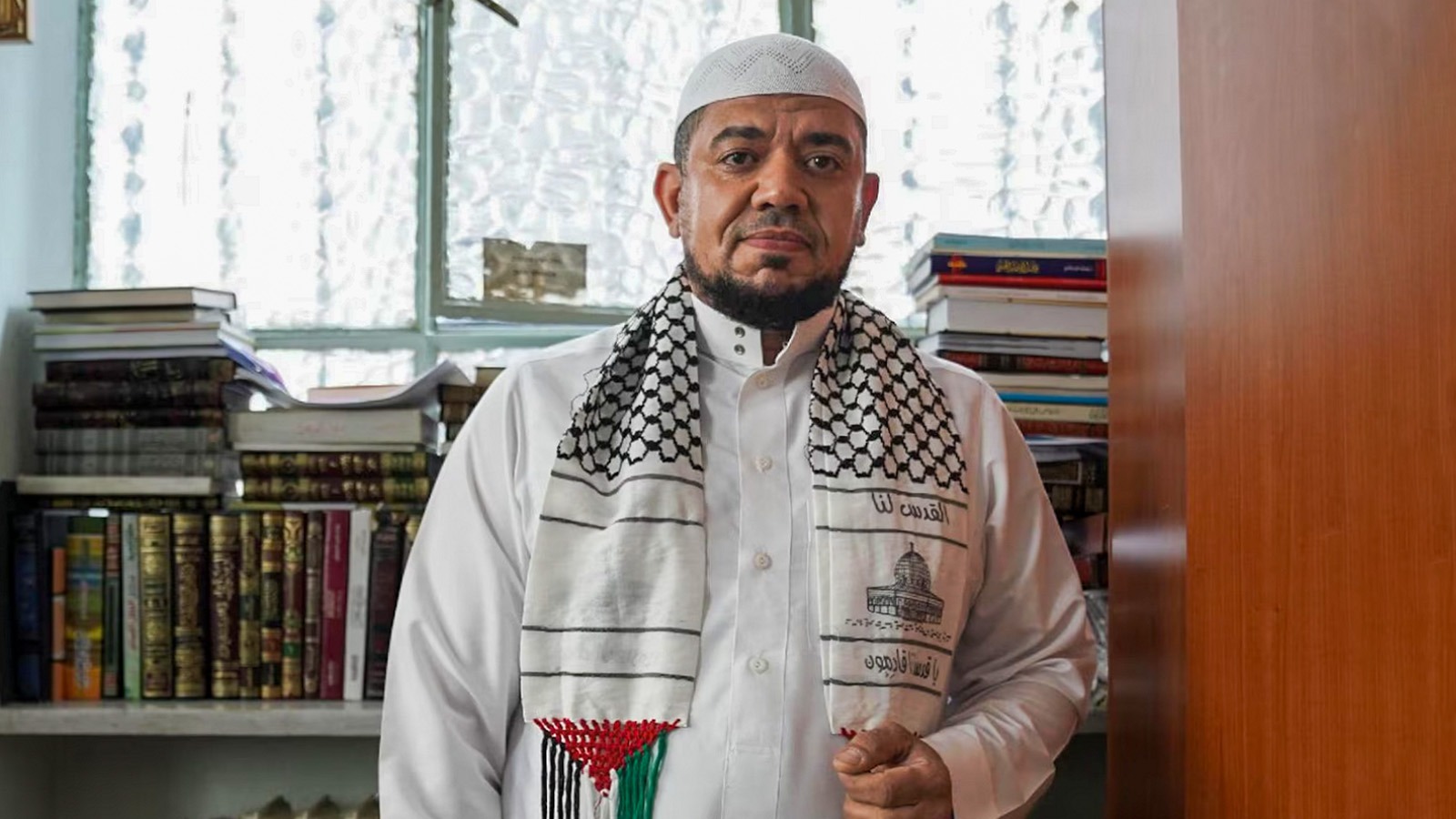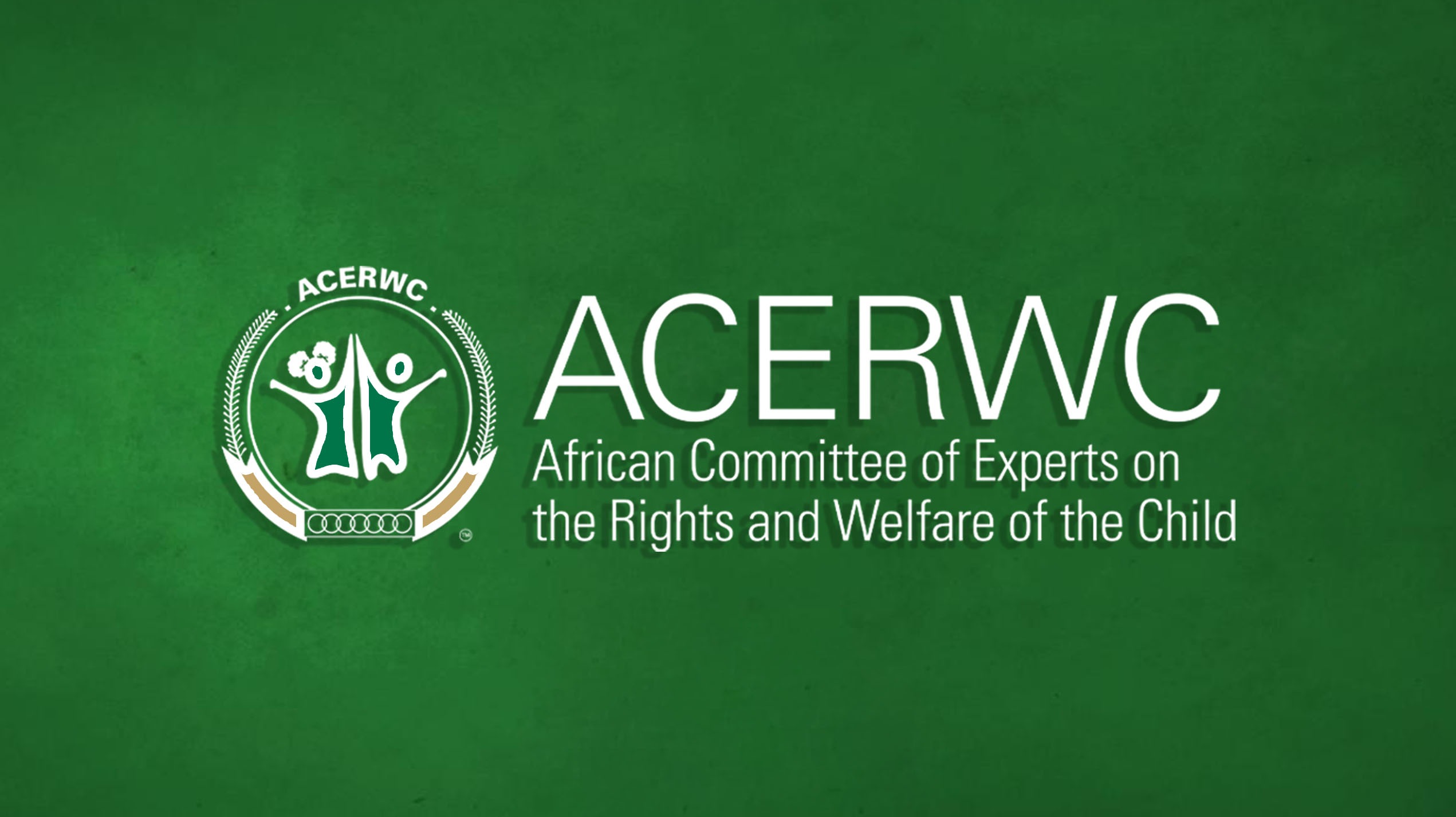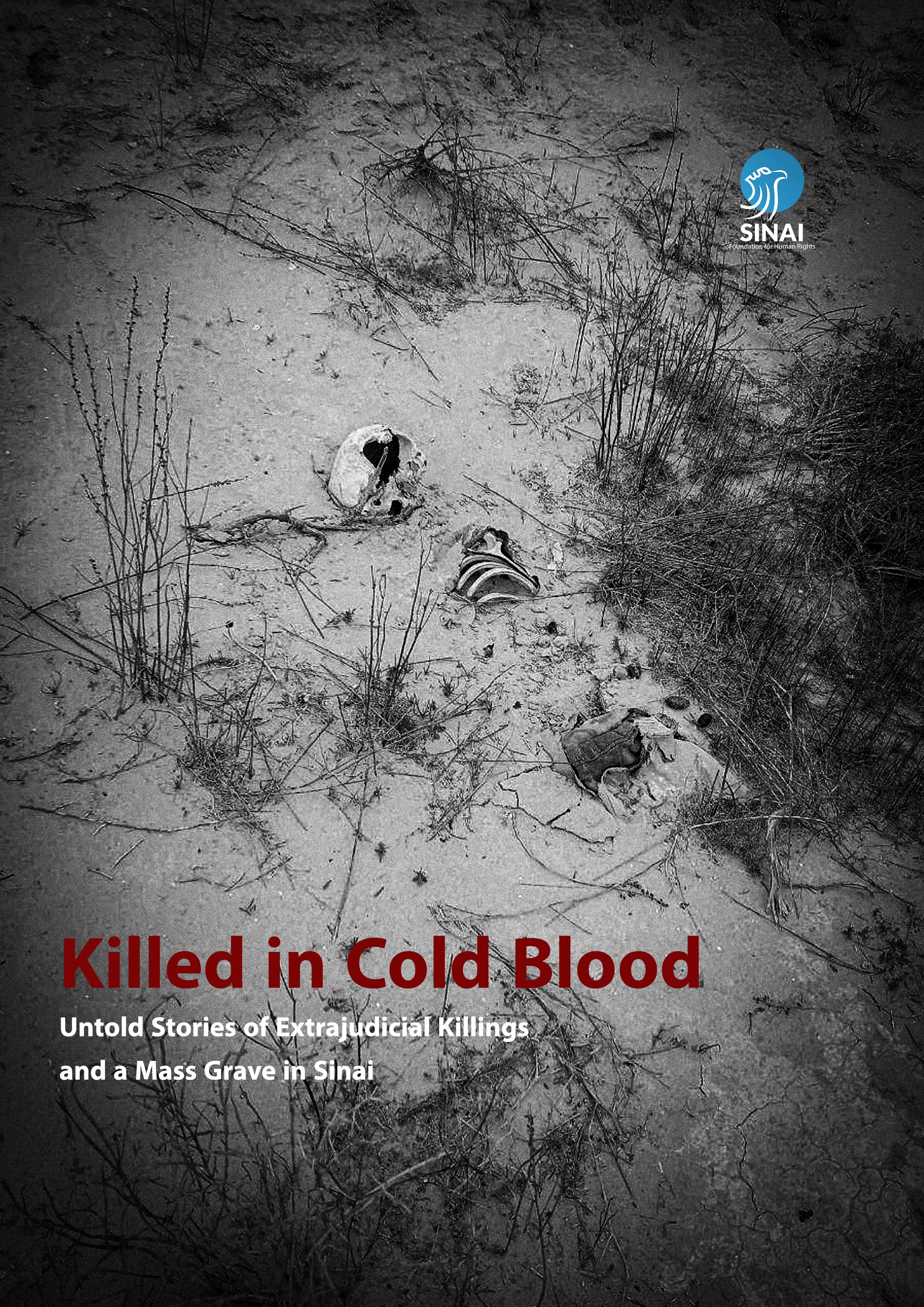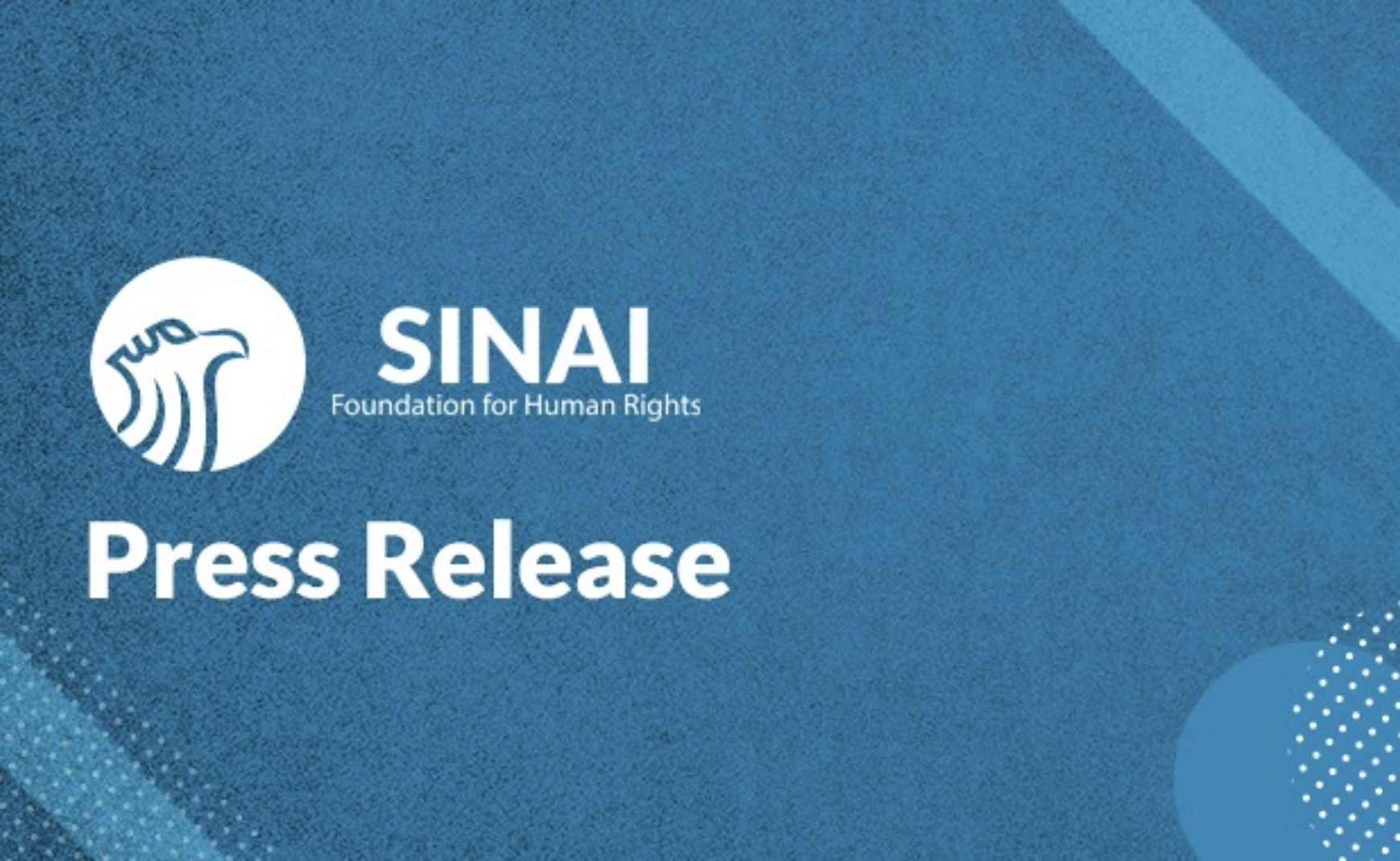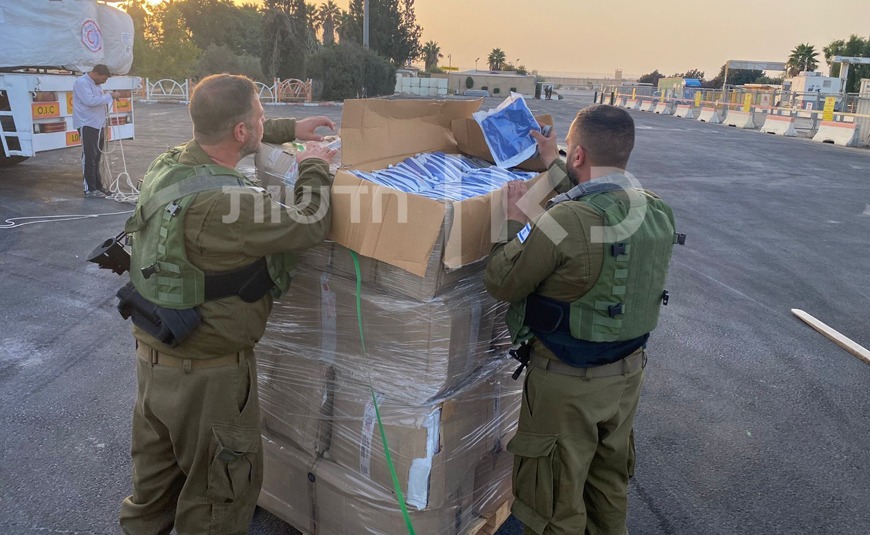
The clash of wills in the Gaza’s Crossing Crisis … Who imposed his agenda?
Since January 2006, Gaza strip has been under siege for 17 years now; since Hamas won the parliamentary elections. Israel has considered Gaza a “hostile entity” and implemented further sanctions that have directly affected the citizens of Gaza’s main rights. This included rigid restrictions on the passage of fuel, commodities and people in and out of the Gaza strip. Isolation policy was imposed by Israeli authorities over the years, by separating it from the Palestinian lands on the West Bank and Eastern Jerusalem, in addition to controlling the flow of commodities in terms of quantity and quality and banning hundreds of commodities; which caused a complete economic recession and a rise in both poverty and unemployment levels. Furthermore, the siege has directly affected the healthcare sector as many basic medical supplies remain in shortage and many patients have to wait for months to perform surgeries. Finally, Israel conducted four military deadly raids on Gaza Strip, since 2006, that have resulted in the death of thousands of civilians, the destruction of tens of thousands of houses and civil buildings and resulted in severe destruction of the infrastructure.
According to international law, the Gaza Strip remains under Israeli occupation, despite the retreat in 2005, and instead of delivering upon the duty to protect civilians; Israel has imposed an unprecedented collective punishment that violates International Humanitarian Law.
Three “Border Crossings” connect the Gaza Strip to the external world, and upon the eruption of the current war; three of these crossings were closed indefinitely. These are the Erez and Karm Abu Salem crossings south of Gaza. Rafah, the third Border crossing, with Egypt, became the only option for the delivery of Humanitarian aid.
However, despite the deterioration of the Humanitarian situation in Gaza, the passage of relief supplies remained limited. Martin Griffiths, Under-Secretary-General for Humanitarian Affairs and Emergency Relief Coordinator said that: There is a need for a daily supply of 100 aid trucks of aid to help the citizens of Gaza which are about 2.2 million people.
Rafah Border Crossing - Since the crisis began!
Rafah crossing came to the center of attention with regard to Humanitarian aid to Gaza as the conflict between Hamas and Israel escalated since it’s the only border crossing in Gaza that doesn’t lead directly to Israel. Instead, it paves the way to Sinai in Egypt.
Despite the numerous closage of the Rafah crossing due to the Israeli bombing; concerning the Egyptian side, the Rafah crossing remained open. According to them, Israeli air strikes made the crossing “Unavailable for use” and unsafe for the passage of trucks into Gaza.
Timeline of Border Crossing Events between Egypt, Gaza and Israel; since the crisis started:
-
Sunday, October 8th: The Egyptian Red Crescent delivered Emergency medical aid to the Palestinian Red Crescent with respect to the deterioration of the situation in Gaza. This aid was delivered through Rafah Border Crossing in the presence of the Palestinian Red Crescent delegation.
-
Monday, October 9th: An Israeli airstrike bombed the Palestinian side of the crossing at 6:50 p.m. Cairo local time. It caused the crossing to stop and pause processes for a few hours. There were no casualties among employees of the border in this incident.
-
Tuesday, October 10th: Work continued at the border crossing on Tuesday morning for a few hours until Israel bombed it in two consecutive air strikes one at 12:30 pm and the other at 15:59 Cairo local time. Upon the strikes, the Egyptian authorities closed the crossing indefinitely, asking registered Palestinian travelers to return to Gaza. This Israeli strike has injured four Egyptian workers who were working on damage maintenance from the initial strike. Sinai Foundation has retrieved an exclusive video showing the retreat of Egyptian fuel and aid trucks from the border crossing; as the Israeli side threatened to bomb the trucks if they passed through to Gaza according to “Channel 12”. Hence, the Egyptian authorities decided to indefinitely close the crossing and asked Palestinians waiting on the Palestinian side of the border, who were registered to travel on that day; to return to Gaza as their travel has been hindered. The same sources reported that the Egyptian authorities informed the Palestinian side in Gaza of the necessity of immediately evacuating their side of the border as the strikes keep pausing a threat to the lives of the crossing’s employees.
-
Thursday, October 12th: Sinai Foundation retrieved an exclusive video showing the arrival of large military reinforcements to the borders with Gaza. Local sources and eyewitnesses reported to Sinai Foundation that these military reinforcements arrived in Rafah Thursday noon, and consisted of officers and soldiers, vehicles, jeeps and tanks. The video Sinai Foundation got shows these reinforcements passing by Arish city on the way to Rafah on the border with Gaza.
-
Saturday, October 14th: Sinai Foundation retrieved exclusive images showing the Egyptian army closing the gates to the Rafah border crossing on the Egyptian side by building high cement barriers with military reinforcements all across the border with Gaza. Sources told the foundation that the Egyptian authorities refused the passing of dual nationalities until the crossing was open for delivering aid to Gaza.
-
Monday, October 16th: A fourth Israeli airstrike targeted Rafah border crossing at 2:30 Cairo local time. The digital investigation lab at the foundation conducted an analysis that concluded that the strike demolished the cement barriers built by the Egyptian army on the Egyptian side of the border. Furthermore, negotiations on the reopening of the borders were hindered due to the Israeli side insisting on searching all humanity and relief aid before it entered Gaza. Egypt announced that the borders won’t be open for the passage of any foreign passport holders unless the relief aid is released for Gaza and the crossing is back to functioning normally in the reception of Palestinians.
-
Friday, October 20th: Sinai Foundation retrieved an exclusive video from the inside of the crossing, showing workers paving the inner road between the Egyptian and Palestinian road; in preparation to deliver aid to Gaza for the first time in the current war.
-
Saturday, October 21st: First Humanitarian aid convoy: The crossing crisis was relieved surprisingly when Israel allowed the passage of the first humanitarian aid convoy, which contained medical aid and food supplies to Gaza, through the Rafah Border crossing, for the first time since the war erupted.
-
Sunday, October 22nd: Second Humanitarian aid convoy: The flow of aid continued for the second day in a reserved manner, the Foundation documented through video the Palestinian side receiving 14 trucks of medical and food supplies, in the presence of UNRWA employees and representatives of the Palestinian Red Crescent in Gaza. The Foundation was made aware of an agreement between the Egyptian and Israeli sides, with American sponsorship, stating that the aid trucks should pass from the Rafah crossing to the Nitzana crossing to be inspected by the Israeli side before entering Gaza, however, this agreement did apply to the second convoy which passed directly through Rafah due to an Israeli’s accidental strike on an Egyptian military post near Karm Abu Salem area on the way to Nitzana crossing from Rafah’s.
A new mechanism for the crossings between all stakeholders
United Nations Office for the Coordination of Humanitarian Affairs on the Occupied Palestinian territories (OCHA) said that according to the new agreement between all parties; the new procedure for delivering aid shall be the passage of trucks through Rafah’s border crossing, south to Nitzana Israeli border crossing for inspection and then back to Rafah for delivery to the UNRWA and Palestinian Red Crescent in Gaza.
-
Monday, October 23rd: Third Humanitarian aid convoy: A source within the Red Crescent reported to the Sinai Foundation that a convoy of 20 trucks carrying aid, headed from the Egyptian side to the Nitzana border at around 10 am Cairo local time, for Israeli inspection. The source added: upon the termination of the inspection, the convoy shall head back later on Monday for Gaza, to be delivered to the UNRWA and the Palestinian Red Crescent on the Palestinian side of the Rafah crossing border. The foundation noted the delivery of the third convoy, on Monday, later in the afternoon, around 4:15 pm Cairo local time; which exhausted an estimate of 6 hours.
-
Tuesday, October 24th: Fourth Humanitarian aid convoy: A source within the Red Crescent reported to the foundation that 20 trucks with Humanitarian aid, headed to Nitzana Crossing around 9 a.m. Cairo local time; for inspection. This time, the trucks were delayed for a long time on the Israeli side and did not arrive by the end of the day.
-
Wednesday, October 25th: Arrival of the first half of the fourth convoy to Gaza and initiating the Fifth convoy Early Wednesday morning, 8 trucks arrived in Gaza as the first part of the fourth convoy, 15 hours after leaving the Egyptian side; meaning it was delayed for inspection at Nitzana for at least 13 hours. In parallel, the fifth convoy, consisting of 20 trucks, left Rafah for Nitzana for inspection around 12 p.m. Cairo Local time.
-
Thursday, October 26th: The second half of the fourth convoy arrived in Gaza Sources at Rafah crossing revealed to the Sinai Foundation the arrival of 12 trucks, as part of the fourth humanitarian aid convoy, to Gaza around 11 a.m. on Thursday, which means it was held at Nitzana Israeli side for about 50 hours. Gaza didn’t receive any trucks from the fifth convoy that day, as it was at Nitzana for inspection.
-
Friday, October 27th: The first half of the fifth convoy arrives in Gaza: A source at Rafah’s crossing pointed out the passage of a medical delegation consisting of 10 doctors with French, German, Italian, Spanish, Danish, and Swiss passports through Rafah’s crossing to Gaza to help with specialized surgeries for the victims of the Israeli air strikes on Gaza. Gaza also received relief aid consisting of 10 trucks at around 11:26 am on Friday, Cairo Local time, as part of the fifth convoy, which departed Wednesday noon for inspection and took 48 hours to reach Gaza, whilst 10 others remain held at Nitzana without expected time of arrival or indications on the reasons of the delay.
What is the new route for humanitarian aid into Gaza?
As the satellite images show, the Egyptian border crossing consists of two gates 430 meters apart; new barriers were installed after the incidents of October 7th. Since aid started arriving, tens of trucks remain in line behind the first gate, 500 meters away from the borders.
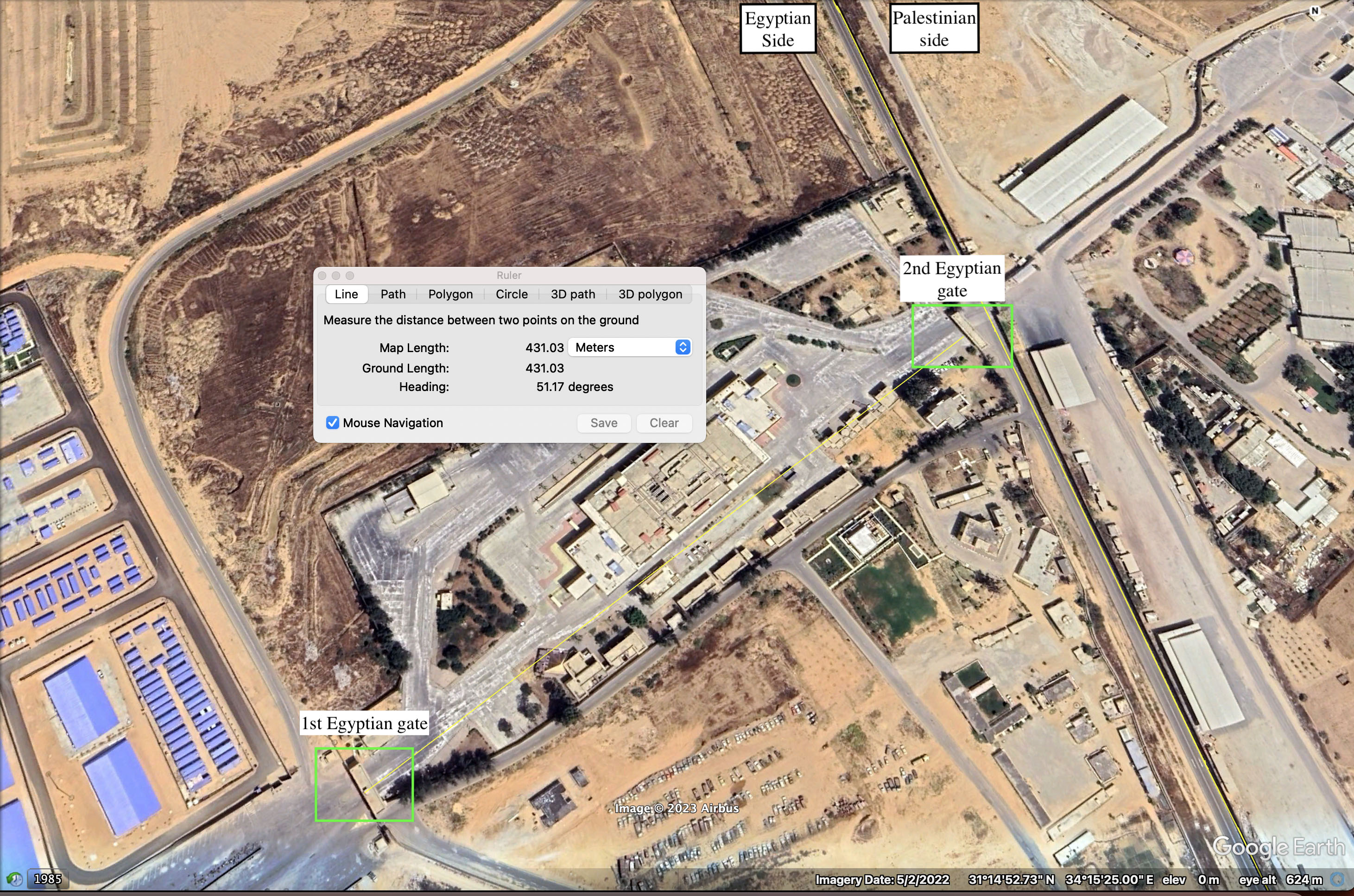
The old procedure, that passed the first two convoys of trucks on October 21st and October 22, through Rafah crossing from the Egyptian side into Gaza directly in Minutes.
As per the third, fourth, and fifth convoys, the new procedure followed a new path; where the trucks passed through the first gate at Rafah crossing, passed south to Nitzana crossing to be checked by the Israeli side, and then went back to Rafah to pass through the second gate and into Gaza.
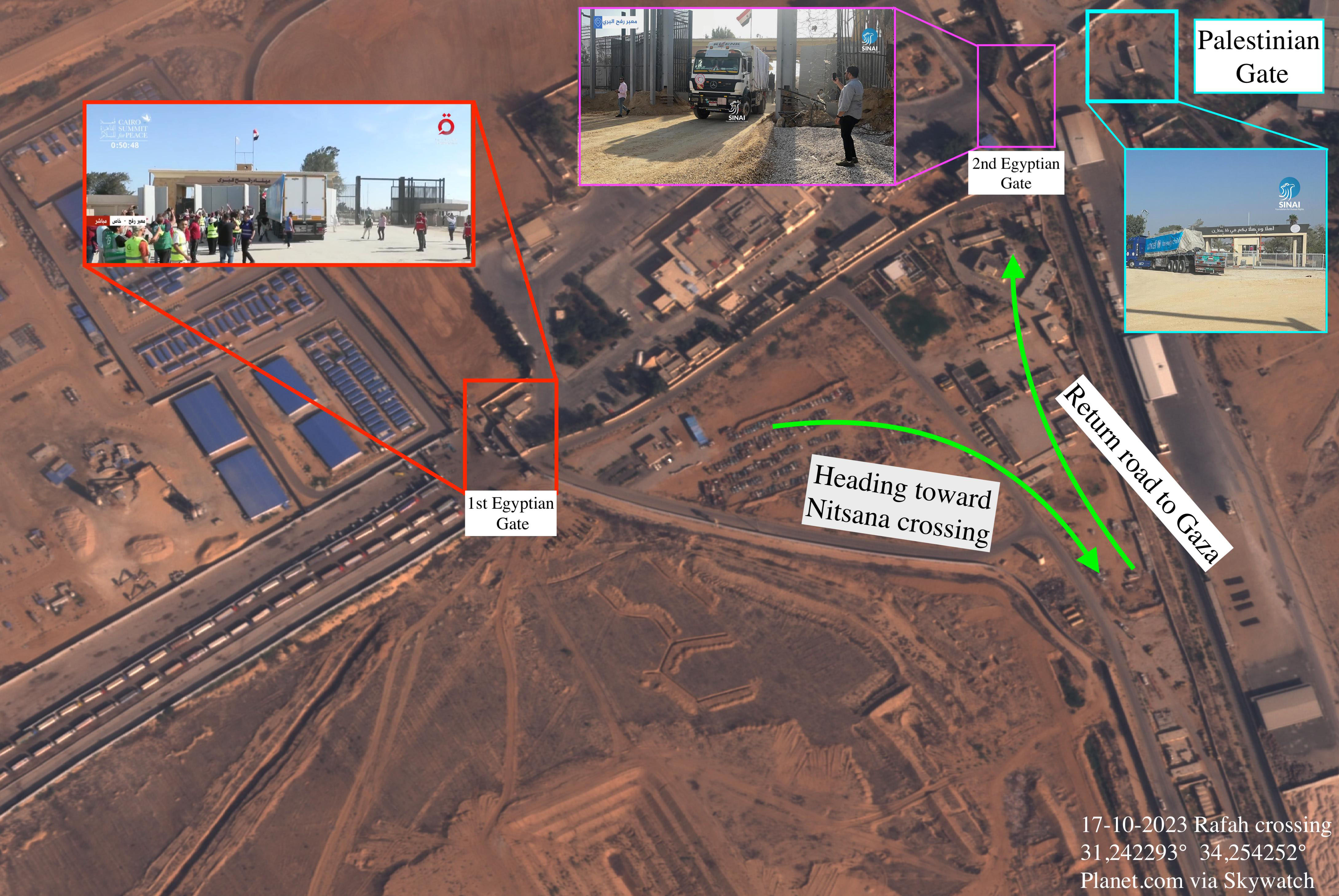
This photo retrieved by the foundation on October 17th shows the trucks waiting on the left at the first gate. As per the new agreement, the trucks shall pass through the first gate and directly head south to the Elouga/Nitzana crossing for inspection.
Nitzana Crossing is 47 km away from Rafah’s, meaning that 1.5 hours are required to go back and forth between each crossing. The foundation calculated the estimated time for trucks to pass through Egyptian gates and then south for inspection and then back to the second gate and into Palestinian land; where it took 6 hours for the third convoy, 50 for the fourth, and 48 hours for the first half of the fifth convoy.
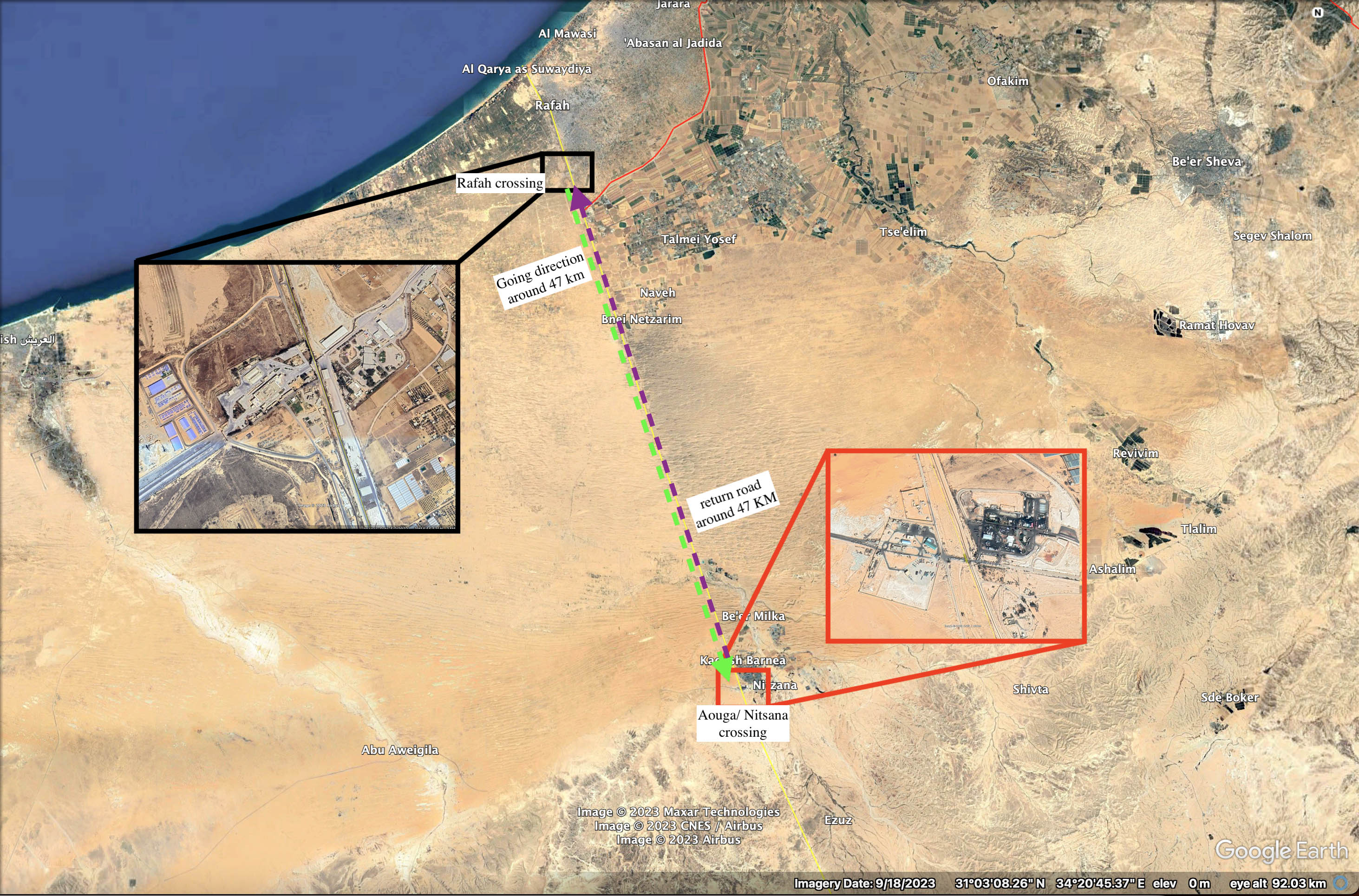
What happened after the new Israeli Procedure execution?
Sources revealed to the Sinai Foundation that the Israeli side rejected an Egyptian proposal for the presence of UN or US supervisors to supervise the process of relief aid entrance to Gaza through Rafah. It has also rejected the proposal of Israeli surveillance cameras at the crossing and insisted trucks go through the Nitzana crossing before they enter Gaza.
The “Crossings’ Agreement” signed by the Palestinian authorities on November 15th, 2005, before Hamas took control of Gaza, consisted of having European supervisors and Israeli cameras at the Rafah crossing. Since 2006 mid-year, and post Gilad Shalit fell hostage for Hamas, Israel banned European supervision and since then the Rafah border crossing has been operated apart from any agreements when Egyptian authorities liberate it for Humanitarian conditions.
What is causing the delay of the trucks at Nitzana crossing?
According to the sources that Sinai Foundation spoke to, it appears that the Israeli side has a wish to display themselves as the power in control of the immediate relief Gaza - which is living in extremely inhumane conditions - needs. The crossing is used as a token in the negotiations for a cease-fire and hostage negotiations from both sides. Israel is pressuring the civilians on the inside, weakening the inner front, to pressure Hamas into accepting Israeli conditions.
The Foundation spoke with one of the Egyptian traders working through the El Ouga/ Nitzana Border crossing, aiming to understand the nature of the security processes at the crossing and the time it requires. The source revealed that normally it doesn’t take more than 5 hours to pass through inspection and customs. A driver who drove through the Nitzana crossing said: “Israeli soldiers are wasting time to elongate waiting time at the crossing.”
Elior Levy, Palestinian affairs editor at Kan Israeli channel, tweeted through X website a picture that showed manual inspection done by Israeli soldiers at the Nitzana Border crossing of boxes including relief aid before it enters Gaza; whilst the businessman revealed that the inspection process at the crossing is normally done electronically.
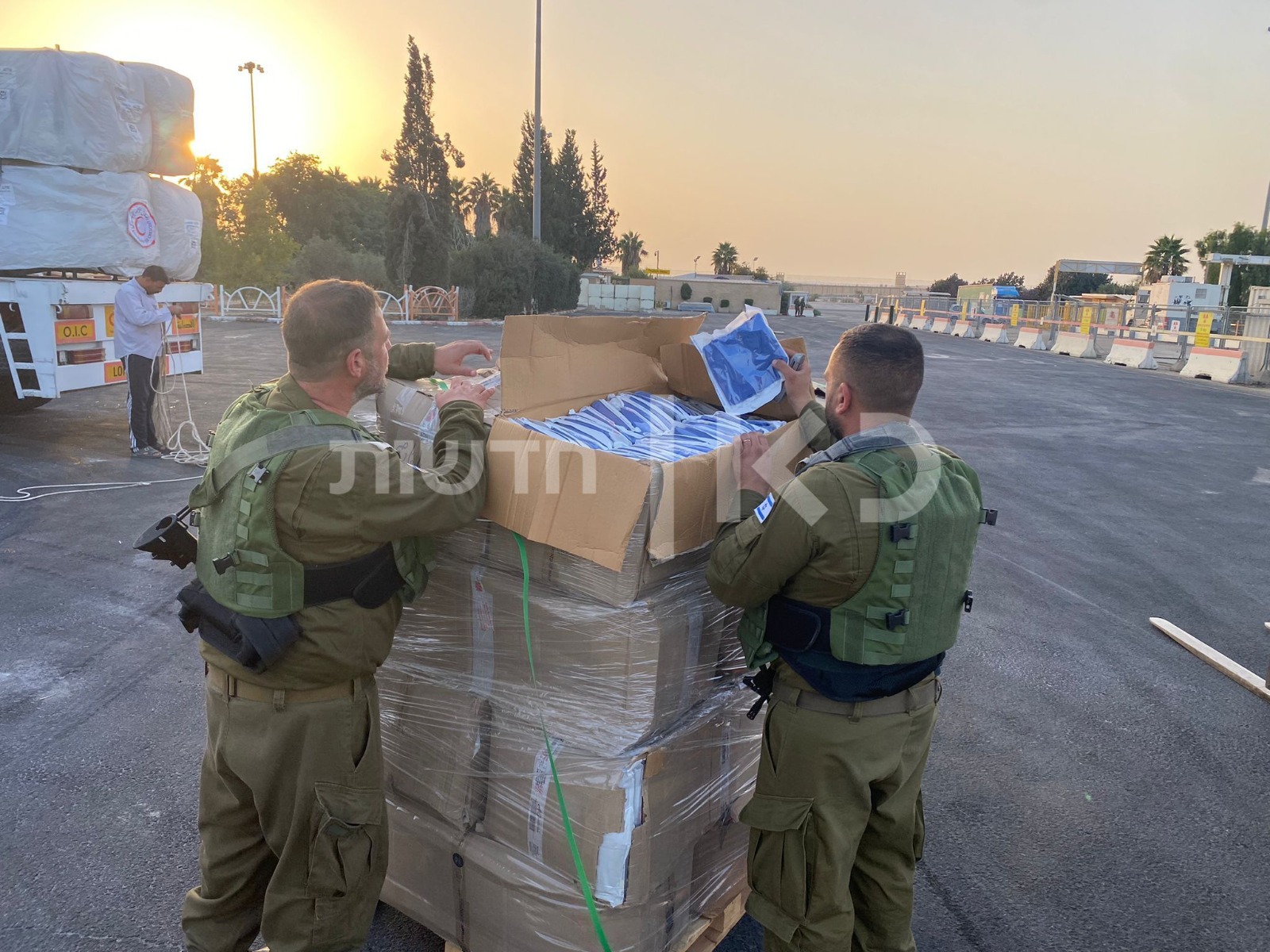
Tags
Related Postes
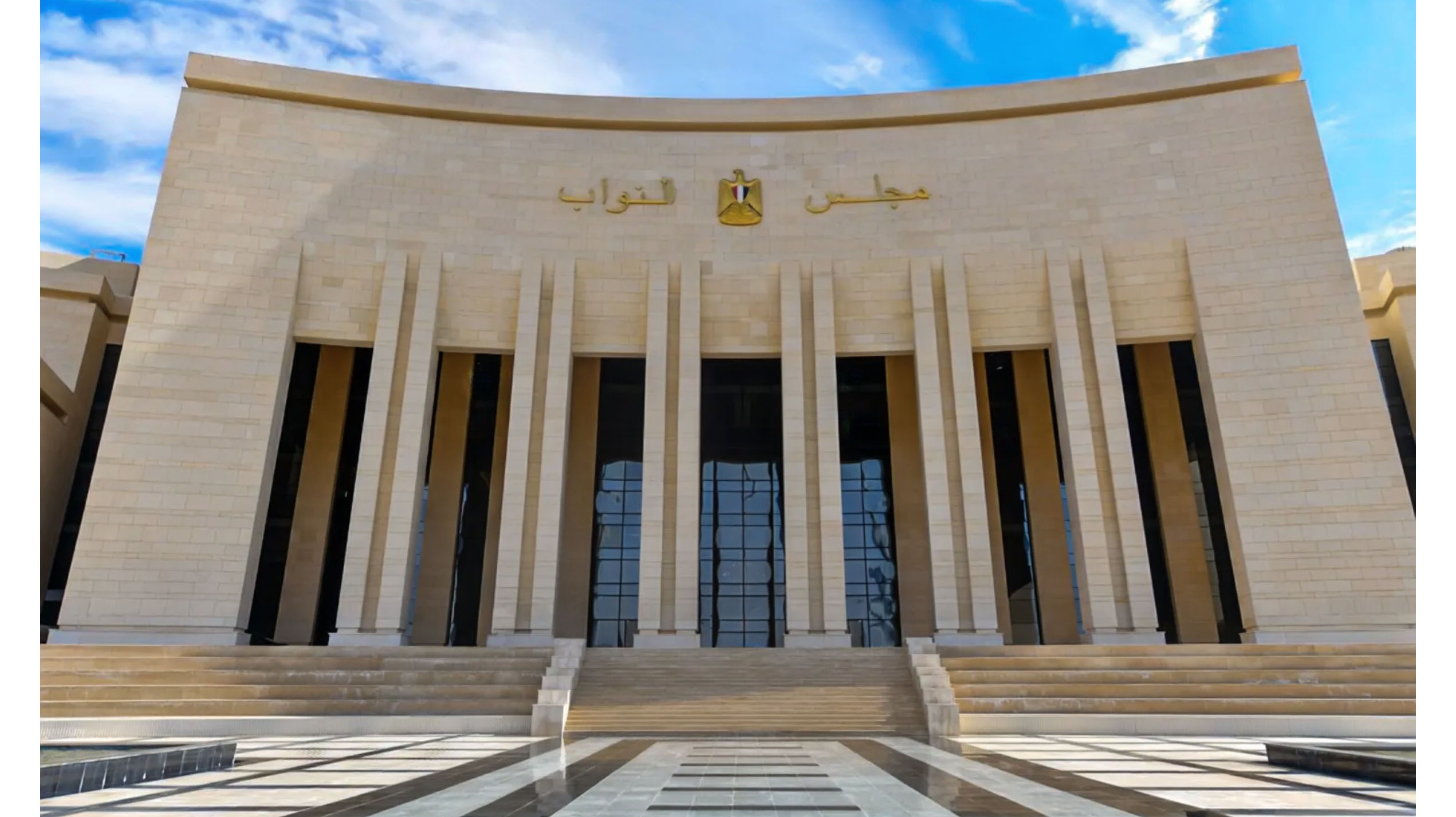 English content
English content

